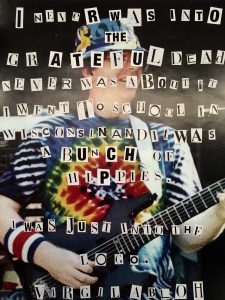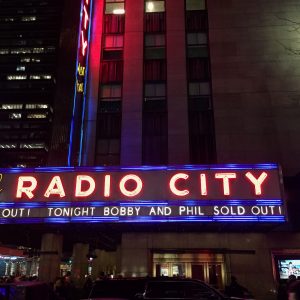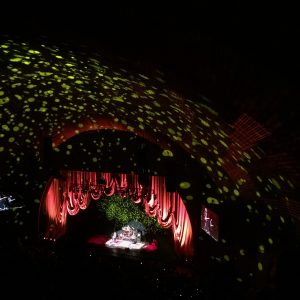My name is Annabelle Walsh, and I am a first-year student at Parsons School of Design, majoring in strategic design & management. My interests include (but most certainly are not limited to) illustration, marketing/advertising, writing, styling, art history, and, perhaps, most importantly — daydreaming. It’s also worth noting that I have a penchant for impractical footwear, anything gingham, and the Grateful Dead. I am a self-identifying sartorialist who enjoys making (often ridiculous) predictions about prospective fashion trends.
If you’re wondering what kind of career I intend to pursue, you won’t find an answer here; I will, however, present you with a Diane von Furstenberg quote that would’ve been my high school yearbook quote had I not resented the idea of being memorialized in a platitudinous record:
“I didn’t always know what I wanted to do, but I always knew the kind of woman I wanted to be.”
I thought that by the end of my first year at Parsons, I would have a clear idea of what I wanted to do, but as my freshman year comes to an end, I can say with complete and utter confidence that I’m just as (if not, more) unsure as I was on the first day.
However, I don’t view this as an inherently bad thing. I’ve discovered a lot over the course of my first year at Parsons — I’ve discovered the things I really, really dislike, and a lot of new things I never would’ve expected myself to enjoy. I’ve tried a lot of new things, and while I’m not madly in love with every project I’ve worked on, I’m exceptionally proud of the amount of time and effort I’ve put into every assignment. From a visual standpoint, my work tends to vary; not everything I’ve produced is exceptionally strong or well-executed, but the common thread woven throughout all of my work is the extent of research, planning, and attention given to the concept/backstory. More often than not, I feel more proud of the process than the final outcome.
I’m not interested in writing just for the sake of writing, or designing just for the sake of making something pretty. I’m interested in telling a story.
I didn’t learn how to make beautiful work at Parsons. I entered this school with the expectation that I would acquire new techniques and skills — and, to some extend, I did — but more than anything else, I learned how to foster concepts and ideas. I learned how to think critically. In my first-semester studio class, I didn’t create a single piece of work that I’d want to show off to my friends or family, but I created work that’s conceptually stronger than anything I’ve ever made before. The most powerful thing that I learned during my first year is something that seems incredibly obvious, but I didn’t discover it until my second semester: if you can find a way to inject your own values and interests into your work — even the projects that don’t seem to allow for that — the work won’t feel so much like work; projects and papers are opportunities for exploration and expansion.
Admittedly, my first semester at this school was absolutely miserable, and that’s strongly rooted in the fact that I felt limited by my assignments and projects. I felt that I wasn’t allowed to reinterpret my assignments to my liking. I felt confined, and as a creatively inclined person, that’s undoubtedly the most frustrating feeling in the world. As soon as I realized that I could push the limitations of my assignments and inject my own interests, inquiries, and passions, I became genuinely excited about everything I was doing. I no longer viewed my assignments as schoolwork; they became extensions of my self.
When I reflect on my first year at Parsons, I think I’ll always refer back to the personal essay I wrote at the end of my first semester. The essay effectively encapsulates my personal journey during my first four months in New York City; it is an honest account of my experiences and realizations. Admittedly, this essay is probably the project I had to spend the least amount of time on, but I honestly believe that’s only because the story had already written itself prior to my putting it down on paper. This essay didn’t require extensive amounts of research, but it did require lots of time spent by myself, mulling over my thoughts, concerns, insecurities, and fears.
Below: My personal essay, “Falling in Love With Myself”
“I remember Saturday afternoons in high school. I would spend most of my free time in Boston, hiding in a café and drawing for hours, until I would force myself out the door so that I could make one of the late night 442 buses. In cafés, I generally kept to myself, but as I sat on a Blue Line train, still diligently working on disturbing portraits of decaying faces, I would notice fellow passengers staring intently at my work (I can’t blame them; I too would stare if I saw a teenage girl sitting on the train drawing disturbing portraits of deteriorating faces). On occasion, a stranger’s sheer curiosity would lead to conversation. Often the conversations revolved around my drawings, and almost always ended (or in some cases, began) with the same question: “are you an artist?”
My response was almost always something to the effect of, “I don’t know.” Initially, I struggled with the question only because of my age. Throughout high school, strangers often assumed I was much older (which, of course, in every context except for that moment of inquiry, I really enjoyed). When asked if I was an artist, I knew what most people were trying to get at; a more appropriate phrasing of the question would have been, “are you an artist? As in, are you an adult with a real job who gets paid real money for your art?” The answer was of course, no. It felt disingenuous to answer the question with “yes”, even if the definition of “artist” is not limited to those who create things professionally. I continued to receive the same question over and over, and concurrently I was beginning to fall out of love with my practice.The question of whether or not I was an artist was no longer simply difficult to answer; I began to resent the question so much that I actively rejected that title — or any title, for that matter. Artist, writer, designer —I wasn’t any of these things. At first, the titles just felt limiting. But as time went on, they didn’t even feel like me.
I came to New York City with a very clear answer to the question, “are you an artist?” The answer was no. I wasn’t an artist. I didn’t feel like an artist. I hated most of the work I created and suffered from very brief bouts of inspiration. I bear a really frustrating tendency to get over-excited about an idea and dedicate a lot of time and effort into its primitive stages, but I ultimately lose momentum once the project is about 75% done. Either because of non-negotiable deadlines or my own frustration with working on the same project for too long, I would inevitably abandon my projects or severely compromise the final product. To no longer identify as an artist probably didn’t seem very appropriate for someone who was about to spend a great deal of money to attend an art and design school, which was precisely my issue. I came to this city (and to this school) feeling absolutely terrified because I no longer saw myself as an artist, but would be expected to assume that exact role for the next four years.
I adamantly pursued the role of the Non-Artist for the first month or so of school. In hindsight, I can see that I absolutely used my titular rejection as an excuse. To not identify as an artist meant that I didn’t need to try so hard in certain classes. “This isn’t me. I’m not here to be an artist,” I would remind myself constantly. I wasn’t an artist because I had no intention of making art for a living. I had effectively tricked myself into believing that I wasn’t the one thing everyone loved to label me as. I liked to pretend that I felt empowered by my fierce rejection of such descriptions, but I know I only renounced them because of deep-seated insecurities. I suffered from a crippling sense of self-doubt, triggered by an experience that stripped me of any sense of self-assuredness I once had. I resented the title of “artist” only because I didn’t feel worthy of it. My insecurities made me feel as though I wasn’t worthy of anything. Abject loneliness, however, forced me to reconsider the self-doubt I had carefully and clandestinely tucked into a suitcase and carried with me to New York.
What they don’t tell you about moving to a brand new city that boasts over 8.5 million people is that it is incredibly lonely. I never imaged making friends would be so hard. In high school, I spent a lot of time by myself, but my solitude was always voluntary. I had a handful of wonderful friends, but I often chose to partake in unaccompanied affairs. I spent countless Saturdays aimlessly wandering the cobblestone streets of Beacon Hill or feeding into my materialistic tendencies by frequenting shops on Newbury Street. I enjoyed these companionless activities because I chose to be on my own. In this brand new city, however, I have no other option but to engage in solitudinous affairs. I’ve found that it’s the absence of choice that makes involuntary solitude so much worse. That being said, I don’t necessarily view abject loneliness as an inherently bad thing. Loneliness has forced me to befriend the one person I never really liked: myself. Loneliness has forced me to become my own best friend. Loneliness has forced me to spend so much time with myself, my thoughts, and ideas, to the point where I think I’ve fallen madly in love with them. Whereas before, I felt such a disconnect from my own self that I couldn’t even identify with my creative tendencies, I now feel more connected than ever to my work. Taking the things that exist within the confines of my mind and putting them down on paper makes me feel a little less lonely. My thoughts and ideas are my friends. My drawings and my writing are my best friends. I am my own best friend.
In a world that has felt so unfamiliar, so uncertain, and quite frankly, so lonely, my drawings and my words often feel like my only friends. I have no one but myself, and as painful as it is sometimes, it has also allowed me to fall madly in love with my work. And at this point, everything I do is for me. Is that inherently selfish? Perhaps. But I don’t feel guilty. I’m creating work on my own terms — for me. I don’t create with the expectation that my thoughts and ideas may not appeal to other people. I create entirely for myself. I don’t allow the prospective judgement of others to dictate the markings on my pages. Every word, every letter, every mark — it’s all for me. In high school, I created work that I thought was deeply personal, but it only ever scratched the surface. Now, I’m creating work that embraces my own vulnerabilities. Instead of creating detailed renderings of unfamiliar faces, I’m drawing my own face, with all of its strangely wonderful imperfections. In high school, I physically could not bring myself to draw my own self, so I looked beyond myself for creative inspiration. Now, I know I only need to look within.
Last month, I had an all too familiar encounter in Washington Square Park. On one particularly melancholy night, I fled my dorm room, seeking refuge in the park. I sat at a bench with a sketchbook, mindlessly marking the pages of my leather-bound book with stylized self portraits. An older man sitting beside me jolted me out of my daydream state, asking me if I could kindly help him figure out how to respond to an email. We began talking. Our conversation spanned from our shared technological inabilities, to him informing me that I am “absolutely Jewish” and “just don’t know it yet.” Soon enough, however, the conversation shifted to the seemingly inevitable question. Noting the pen and sketchbook in my hands, he asked if I was an artist. I thought about the question before responding with, “I don’t know.”
One might assume that since I’ve learned to love my work, I would now have an answer to the question I never quite knew how to answer, but the truth is, I still don’t. Perhaps responding to the question with “I don’t know” makes me sound unsure of myself, but that couldn’t be further from the truth. “I don’t know” no longer comes from a place of uncertainty, but rather, from a place of complete and utter confidence. I no longer feel the need to reject these identifiers, but I also no longer feel the need to have a definitive answer to the question, “are you an artist?” I may not know whether I am an artist, but I do know that I am madly in love with what I do. And isn’t that liberating?”
Writing with such honesty can be, quite frankly, terrifying, but putting my experience down on paper was an incredibly cathartic experience. I felt that after writing this paper, my perspective shifted dramatically. I came back to New York in January with a brand new mindset. I felt ready to take on second semester, and create work that was deeply personal and important to me.
My long-term research project chronicling the intersection of fashion and the Grateful Dead is undoubtedly the highlight of the latter half of my first year. I am unbelievably proud of the amount of time and research I put into this project. It really became apart of me, and I know for a fact that this project won’t be over for me when the semester comes to an end. This is something I want to continue to pursue. I’ve found a way to inject my own passions and interests into my work, and I’ve found a way to effectively merge my two greatest passions.
I began extensively researching the intersection of fashion and the Grateful Dead about six months ago. I remember talking to my friend, Gabriel, on the phone, and telling him how badly I wanted to turn my observations and research into something tangible. I was desperate for an opportunity to discuss this phenomenon in greater detail because, to me, it was so important and so obvious, and yet, nobody was talking about it. When the opportunity to explore and research a topic of my choosing presented itself in my studio/seminar classes, I immediately took advantage of it.
I conducted on-site interviews, read countless articles and books, watched documentaries and videos, spoke to family members, reached out to designers and editors — and all of this I did because I genuinely wanted to, not because I necessarily had to. I learned so much about two worlds that I’ve always considered myself apart of, and now my position in these worlds feels so much more meaningful. I’ve considered so many different approaches to the subject matter, I’ve discovered flaws within both systems that I was previously blind to, and I’ve had so many powerful, meaningful conversations and realizations regarding my chosen topic.
Again, this long-term project is an example of work that goes beyond the surface. I’m exceptionally proud of the physical objects I made and the papers I wrote, but I’m even prouder of the extent of my research. I know that I can do something with this research — I’m not entirely sure what that “something” is yet, but I know I’ll figure it out soon enough.














Looking forward, I know I want to continue to pursue my “FASHION IS DEAD” project. I cannot imagine abandoning this project so soon. I still have so many questions I want to find answers to. I still have so many ideas and prospective projects I want to try out. For me, this topic is so expansive and far-reaching; I could very easily integrate it into my work for the next three years, and I am absolutely determined to make that happen. I know I have the conceptual, research, and critical thinking skills.
Several years ago, during a conversation with my father, I said something to the effect of,”I wish I could find a way to merge fashion and the Dead. I would love to create Grateful Dead-inspired clothing.” At the time, the idea seemed like a far-fetched fantasy. At this point, it seems like the inevitable next step.












































